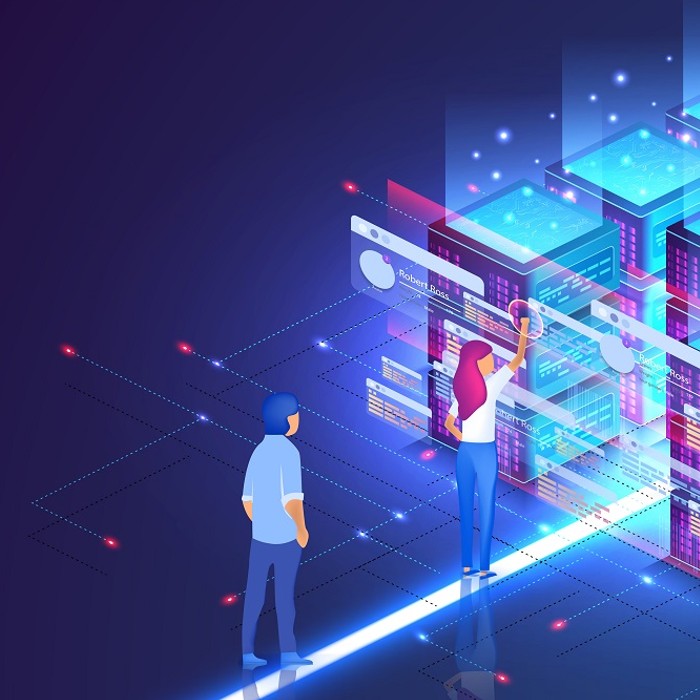If technological tremors were material instead of metaphysical, enterprises would be rattling like buildings on a fault line during an earthquake. The source of their seismic unrest: emerging technologies like artificial intelligence, machine learning, the Internet of Things, blockchain, 5G and quantum computing.
While earthquakes are neither predictable nor preventable, with the right preparation, even the most rigid structures can withstand them. That’s the premise behind the CXO Masterclass on digital disruption, a day-long educational experience offered by Nutanix and Columbia University. Participants walk away with a strategic view of their evolving role in IT and how they can become effective IT and business leaders.
This is the greatest opportunity technology people have ever had to become the key people in their organizations.
“The convergence of new technologies in a cloud-enabled environment is the start of an incredible revolution. This is not an opportunity to be missed.”
Langer said potential leaders must master new skills to guide and shape that revolution. These skills are as much cultural as they are technical.
“IT people often see themselves as responsible for the technical architecture of their firm, but social architectures are changing, too,” said Langer.

Traditional organizations struggle with how to become “born-digital” companies like Amazon, for whom technology is structural instead of supplementary. “Whoever gets the social architecture of the firm right will be tomorrow’s CEO,” Langer said.
Transforming into a Leader
The interactive, classroom-style course debuted in 2018 and is offered in cities around the world, where groups of 30 C-level and aspiring C-level attendees convene in order to dissect the future of IT.
The typical Masterclass course includes several key elements. One, for example, is a benchmarking exercise in which participants assess their current maturity with regards to digital fluency and leadership. Another is an interactive panel discussion with technology “mentors” – these are CIO, C-level executives and skilled practitioners who share firsthand accounts of the pain and pride of digital transformation inside their organizations. A third, titled “How IT Leaders Provide Strategic Advantages,” provides IT professionals with actionable tips to help them catalyze digital transformation when returning to their offices.
IT leaders want to know how they can embrace digital transformation, how to implement it, and what the benefits will be.
The Shrinking S-Curve
In the Masterclass on digital disruption, attendees learn about the S-curve, an economic model that represents the lifecycle of technology, from incubation on one end of the curve to saturation on the other.
“The S-curve is at the foundation of how products and services mature and turn into commodities,” said Langer.
Organizations that want to succeed in a born-digital economy must understand where on the S-curve specific technologies lie, the goal being to capture market share at the beginning of the S-curve and outsource or retire legacy systems at the end of it.
“Digital disruption is shrinking the S-curve, which means companies have less time to come up with solutions and … are losing market share faster,” Langer said.

Masterclass event in Melbourne, Australia. CIO Mentor Panel (from L to R): @art_langer Dr. Art Langer of CTM, Steve Hodgkinson of The Department of Health and Human Services, entrepreneur Renzo Scacco and Eddie Kaul of SureComply.
Discussing concepts like S-curves in boardrooms is how IT professionals ultimately will graduate from being business supporters to business drivers.
“If you’re a supporter, the expectation of the market and of your company is that you can do your work cheaply and with no risk factors,” Langer said. “If you’re a driver, you have to take risks, and therefore you’re entitled to have a failure rate.”
It’s the difference between costing and making your company money. Those who consume resources may power the enterprise, but those who generate them are entrusted with actually steering it.
Attendees give the session high marks. Its instruction affects “how I will tackle larger issues and look more strategically,” said Masterclass graduate Christopher Ching, an IT leader at healthcare company Roche.
Its focus on strategic instead of tactical transformation means Masterclass participants like Ching walk away with a certificate from an Ivy League university, but more importantly they gain skills to lead a meaningful career through a time of digital transformation.
“It’s not about learning the latest, greatest technology,” said Langer. “It doesn’t matter where the technology goes. It’s about learning how to evolve yourself to take advantage of this opportunity.”
Editor’s note: New CXO Focus Masterclasses series called “Authentic Leadership Masterclass”begins in Atlanta on November 13, 2019. Learn more by visiting the Nutanix Masterclass site.
Matt Alderton is a contributing writer who specializes in business, culture, science, technology and travel. Find him on Twitter @AldertonWrites.
© 2019 Nutanix, Inc. All rights reserved. For additional legal information, please go here.











